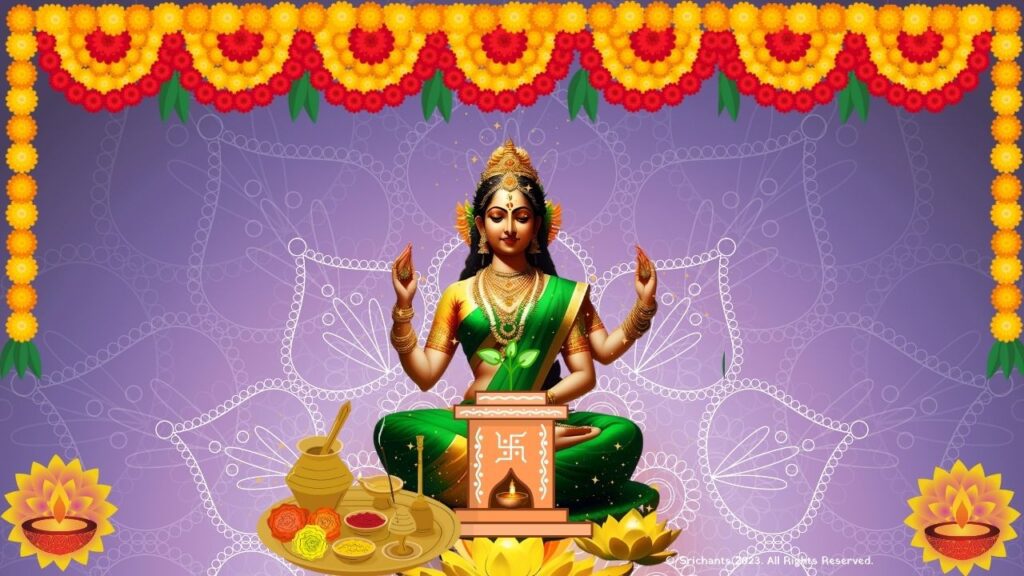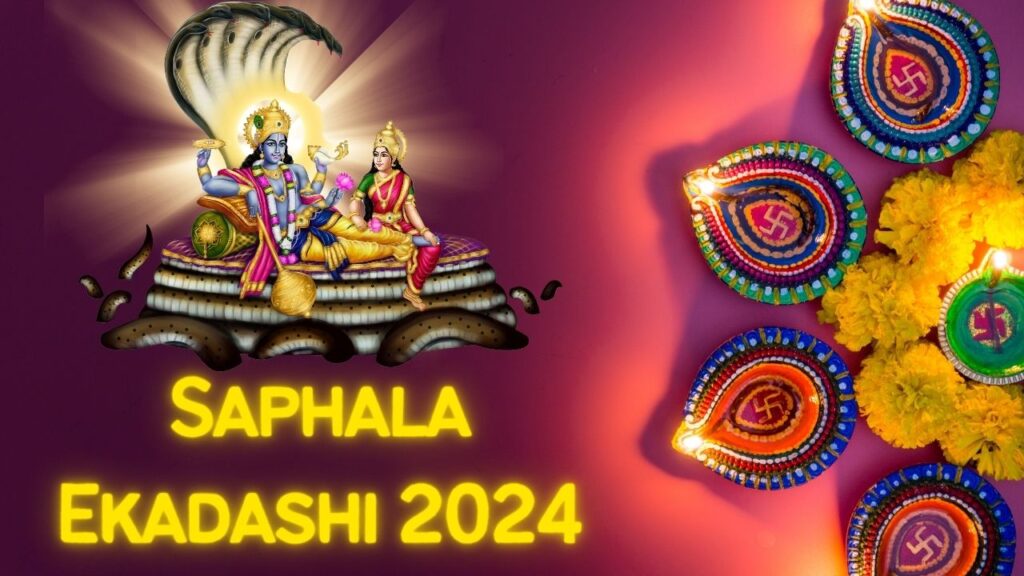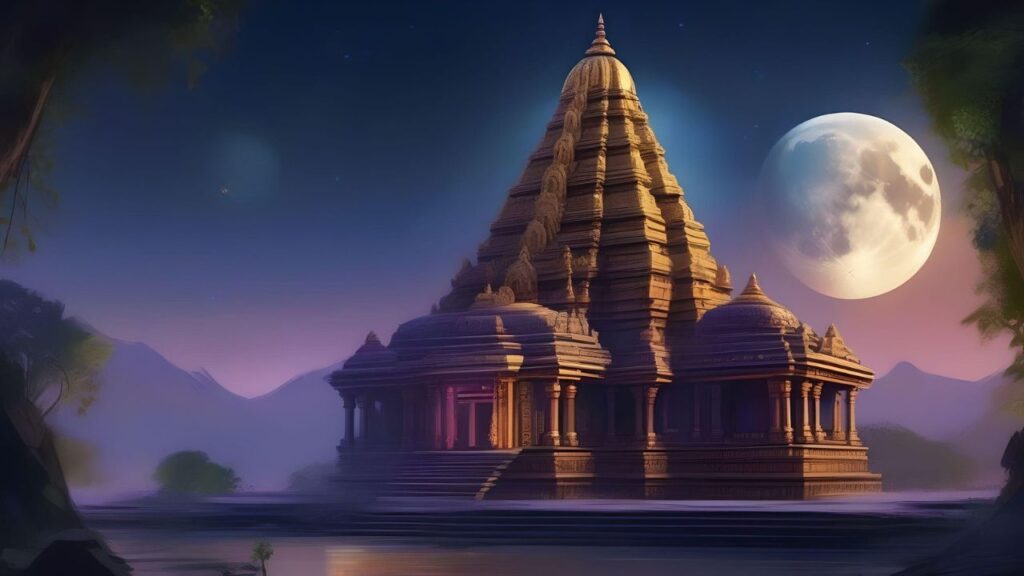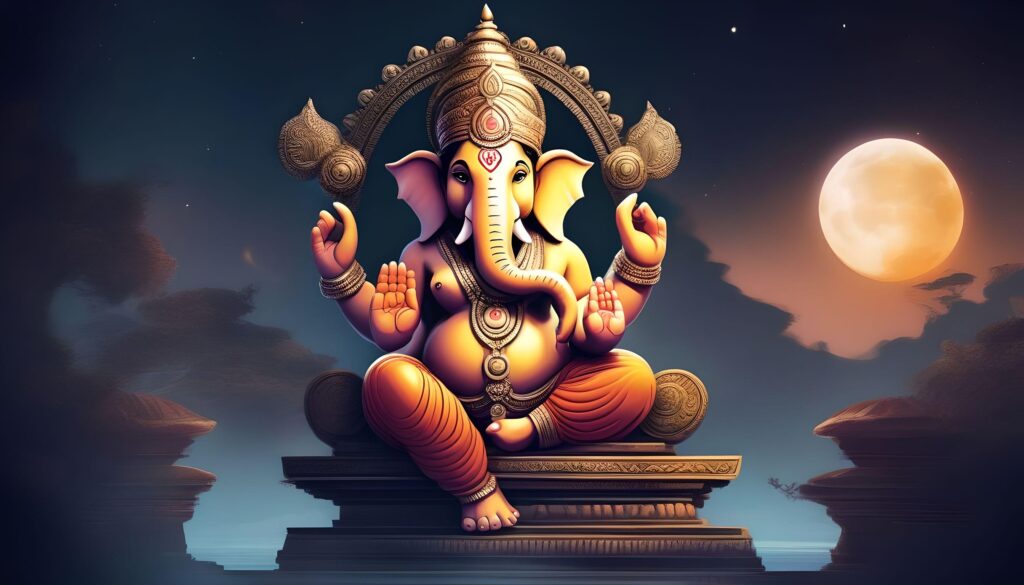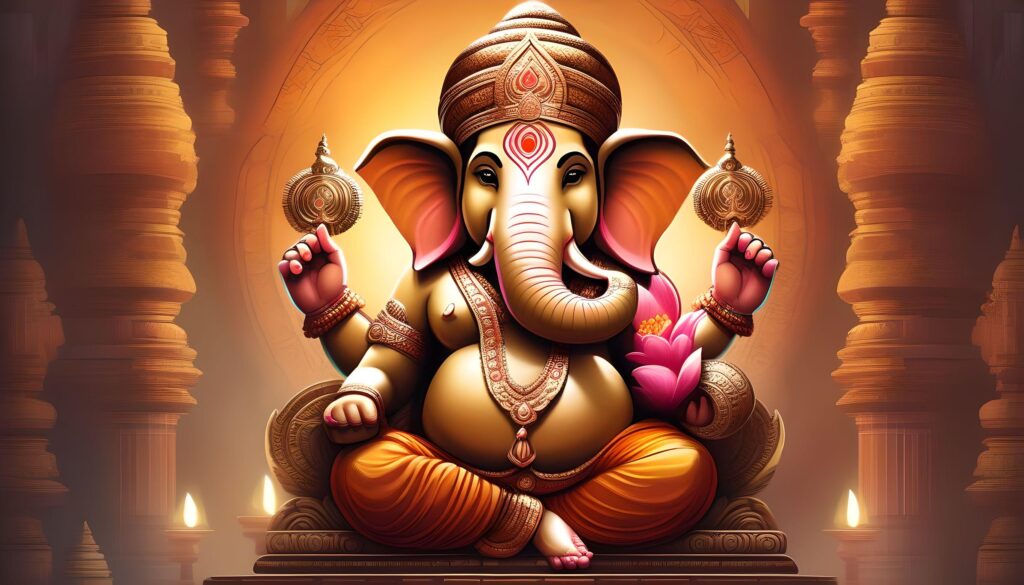Govardhan Puja : The Festival of Nature’s Blessings and Protection
Hindu holiday Govardhan Puja, commonly known as Annakut Puja, is rather important both religiously and culturally in India. Celebrated on the fourth day of Diwali, it closely follows the lighting festival. The Govardhan Puja marks the divine action of Lord Krishna raising the Govardhan Hill to protect the Vrindavan people from heavy rain. This festival respects the harmonic coexistence of people with the natural surroundings. Together with some regularly asked questions to help us to better understand the significance, customs, and festivals of Govardhan Puja, here will be discussed these aspects.
The Story Behind Govardhan Puja
With a millennia of history, Govardhan Puja centers on the beloved Hindu divinity Lord Krishna. At the town of Vrindavan, people used to honor Lord Indra, the god of rain and thunder, in quest of blessings for a bumper crop. Young Krishna still questioned this practice though. Rather, he argued, people should revere Govardhan Hill, the peak providing rich soil, fresh air, and water, so allowing their survival and growth.
Krishna convinced the people to respect Govardhan Hill and the surrounds instead of Indra. Offended, Indra decided to punish the residents by sending a violent storm on Vrindavan. From thunder, lightning, and strong rain, the village was under danger of flooding. Seeing his people in misery, Lord Krishna built Govardhan Hill with his tiny finger to create a natural canopy shielding the animals and humans from the storm. Krishna maintained the hill till Indra fixed his mistake and halted the rain seven days ago.
This divine protection deed captures Krishna’s environmental and human compassion. Observed since then as a show of thankfulness to Lord Krishna and the abundance of nature is Govardhan Puja.
Significance of Govardhan Puja
- Honoring Nature and Ecology: Govardhan Puja highlights the importance of respecting nature and recognizing the resources that the environment offers. By worshiping Govardhan Hill, people acknowledge the blessings of natural resources such as land, water, and air, all of which are essential for life.
- Promoting Balance: The festival teaches us that humans should live in harmony with nature. It discourages the exploitation of natural resources and encourages us to be mindful of our environment.
- Divine Protection and Faith: Krishna’s act of lifting Govardhan Hill serves as an example of divine protection, fostering faith and trust in God. It reminds devotees that they will be protected during difficult times if they have faith.
- Community and Togetherness: The festival brings families and communities together. People gather to prepare food, perform rituals, and enjoy traditional songs and dances. This sense of togetherness strengthens social bonds.
- Food Abundance and Gratitude: Govardhan Puja is also known as Annakut, which translates to “mountain of food.” Devotees prepare various food items as offerings, representing abundance and gratitude. This also symbolizes the nurturing aspect of nature, which sustains all living beings.
How Govardhan Puja is Celebrated
Govardhan Puja varies in celebration across India, but the essence remains the same. Here’s how people commonly celebrate this special day:
1. Creating a Govardhan Hill Replica
Devotees create a small hill or mound to represent Govardhan Hill out of cow manure, mud, or clay. On this symbolic hill covered in flowers and leaves, there abundant little sculptures of Lord Krishna, cows, and other animals. Several sites have large replicas of Govardhan Hill built and attended to for prayer.
2. Annakut Offering
On this day, devotees cooking a large variety of vegetarian foods observe Annakut, which means a “mountain of food.” Formed in a mound or hill, these offerings—which include in sweets, rice, curries, fruits, and dairy products—represent plenty. Later on, everyone enjoys this meal—prasad, sometimes called blessed food—honoring the wealth of nature.
3. Puja Rituals
The Govardhan Puja, honoring Lord Krishna, consists on presenting flowers, incense, and singing songs in front of an aarti—a lamp-operated ceremony. Devotees also chant mantras and tell Krishna’s story, so reminding themselves of the divine protection the god grants.
4. Circumambulating the Hill (Parikrama)
Devotees of the Govardhan Hill replica exhibit respect and allegiance. Known as parikrama, this act of circumambuation indicates one seeking Krishna’s blessings and answering to him. A pilgrimage, thousands of people walk on the parikrama around the ancient Govardhan Hill in Vrindavan.
5. Cow Worship
Cow symbols of motherly care and feeding especially appeal to Hindu civilization. On Govardhan Puja, people commemorate cows by giving new grass, applying tilak—a mark on the forehead—and apparel and floral decoration. This method emphasizes the respect for animals and the connection between people and the surroundings.
Regional Variations of Govardhan Puja
Govardhan Puja has different names and forms across India, with local customs adding unique flavors to the celebrations. Here are a few examples:
- Maharashtra: In Maharashtra, Govardhan Puja is celebrated as “Padva” or “Bali Pratipada.” The day marks the victory of King Bali, and people celebrate the arrival of the new harvest season.
- Gujarat: In Gujarat, Annakut is celebrated with grand food offerings. Temples prepare a large variety of delicacies, which are displayed for public viewing before being distributed.
- North India: In places like Uttar Pradesh, especially in Mathura and Vrindavan, the celebration is on a grand scale. People from across the country come to Vrindavan to perform parikrama around the Govardhan Hill.
- South India: Although not widely celebrated as in North India, some parts of South India observe this festival by preparing a feast, worshiping cows, and visiting temples.
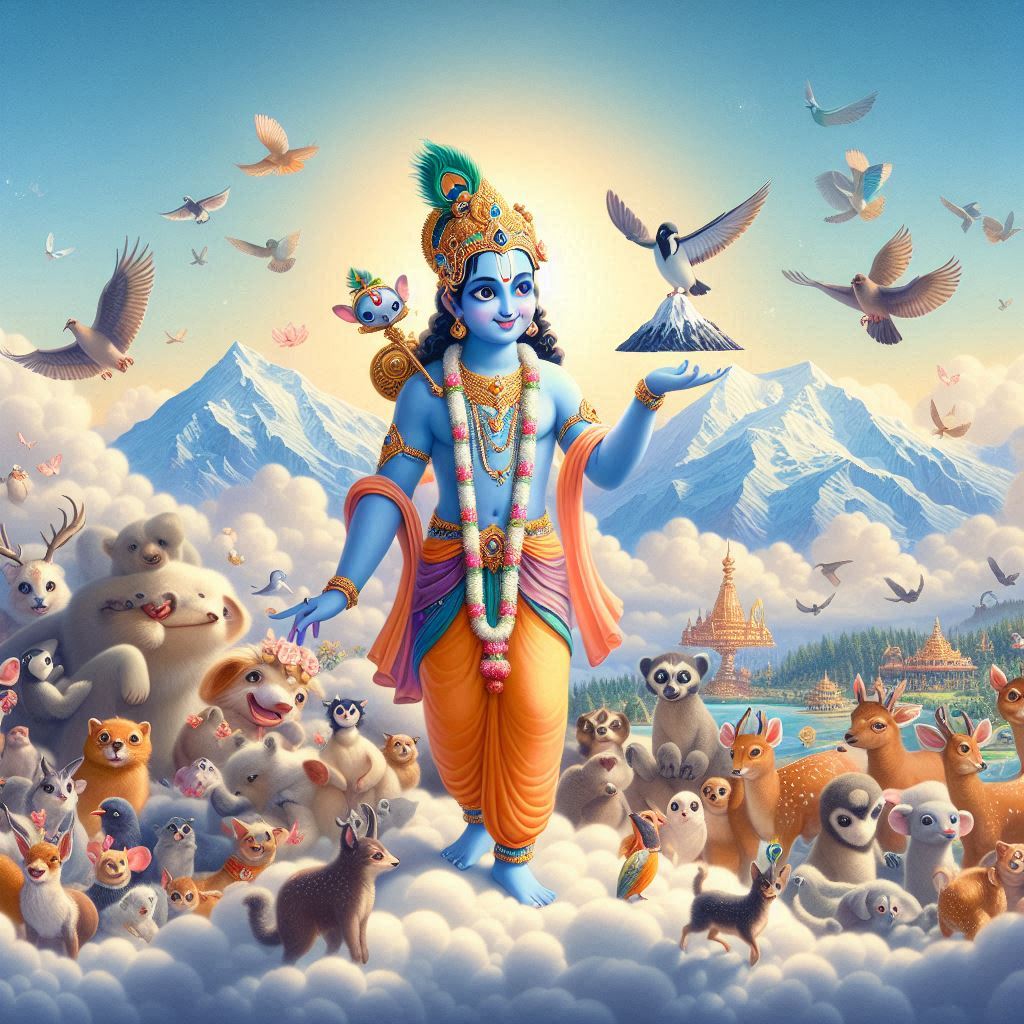
Govardhan Puja Prayers and Songs
Songs and prayers honoring Lord Krishna and Govardhan Puja give the festival devotional and joyous atmosphere. Traditionally bhajans, sung expressing appreciation and love for Krishna are devotional songs like “Governardhan Giridhari” and “Governind Bolo Hari Gopal Bolo.” Families together to sing and celebrate radiate pleasant energy in the air.
Modern Ways of Celebrating Govardhan Puja
With changing times, the way Govardhan Puja is celebrated has evolved. Many people live in urban areas, away from traditional village settings. Here’s how modern celebrations take place:
- Eco-Friendly Celebrations: People are more aware of the environmental impact of festivals today. Instead of using harmful materials for decorations, eco-friendly options like clay, flowers, and leaves are used to create Govardhan replicas.
- Charitable Acts: Some people choose to celebrate by giving back to the community. They may distribute food to the needy, support animal shelters, or participate in nature conservation activities as a tribute to Govardhan Puja’s message of respect for nature.
- Virtual Celebrations: Due to busy schedules or distance, families sometimes celebrate together online. They perform rituals at home and connect via video calls to share the joy of Govardhan Puja with loved ones.
Govardhan Puja FAQ
Q1: What is the main purpose of celebrating Govardhan Puja?
Govardhan Puja is celebrated to honor Lord Krishna’s act of lifting Govardhan Hill to protect the villagers of Vrindavan from heavy rains. The festival emphasizes gratitude towards nature and its resources, along with reverence for Lord Krishna.
Q2: What is Annakut, and why is it important in Govardhan Puja?
Annakut, meaning “mountain of food,” is a large offering of food prepared by devotees. It represents abundance, gratitude, and the blessings of nature. Annakut offerings are later distributed as prasad, symbolizing community bonding and sharing.
Q3: Why is cow worship part of Govardhan Puja?
Cows are considered sacred in Hinduism, symbolizing motherly love and nourishment. They are closely associated with Lord Krishna, who was known for his love for cows. By worshipping cows on this day, devotees show respect for animals and acknowledge their importance in sustaining life.
Q4: How is Govardhan Puja celebrated in Vrindavan?
In Vrindavan, Govardhan Puja is celebrated on a grand scale. Devotees perform parikrama around the original Govardhan Hill, engage in bhajans, and make large Annakut offerings. It is a time of pilgrimage, with thousands of people visiting the hill to seek blessings.
Q5: Can people of all faiths participate in Govardhan Puja?
Yes, people of all backgrounds can join in the celebration. The festival promotes universal values such as gratitude, respect for nature, and community bonding, which are applicable to everyone.
Q6: What kind of food is typically prepared for Annakut?
For Annakut, people prepare a wide range of vegetarian dishes, including sweets, curries, rice, fruits, and dairy items. These foods are arranged in a mound-like
structure to symbolize a mountain and are offered to Lord Krishna during the puja.
Q7: Is Govardhan Puja only celebrated in North India?
While Govardhan Puja is more prominent in North India, especially in places associated with Krishna like Mathura and Vrindavan, it is also celebrated in other parts of India, albeit with regional variations.
Q8: What is the significance of parikrama during Govardhan Puja?
Parikrama, or circumambulation, around the Govardhan Hill or its replica symbolizes respect and devotion towards Lord Krishna. It signifies surrender to divine protection and the desire to live in harmony with nature.
Q9: How can I celebrate Govardhan Puja if I live in a city?
In cities, people can create small clay or cow dung replicas of Govardhan Hill at home, prepare a simple Annakut, and offer prayers. Many families now use online platforms to celebrate with distant relatives, preserving the festival’s spirit.
Q10: Why did Lord Krishna oppose worshipping Indra?
Lord Krishna believed that instead of worshipping Indra, the people of Vrindavan should honor nature and Govardhan Hill, which provided them with the resources for life. His message was to prioritize respect for nature over appeasing gods out of fear.
Govardhan Puja is not only a religious festival but also a celebration of nature, gratitude, and community spirit. It reminds us of the need to respect and protect the environment while strengthening our faith in divine protection. Whether celebrated traditionally or in modern ways, the essence of Govardhan Puja continues to inspire people across generations.
Reference: Buy Spiritual Books
#govardhanpuja #govardhan #puja #mountain #krishna

